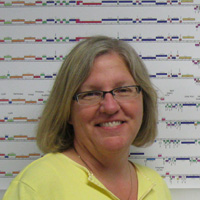Welcome to the forums at seaphages.org. Please feel free to ask any questions related to the SEA-PHAGES program. Any logged-in user may post new topics and reply to existing topics. If you'd like to see a new forum created, please contact us using our form or email us at info@seaphages.org.
Recent Activity
cdshaffer posted in Alphafold models of minor tail proteins
pchien posted in Alphafold models of minor tail proteins
pchien posted in Alphafold models of minor tail proteins
Debbie Jacobs-Sera posted in Adding genes in right arm of AS2 genomes
seaphages_usc posted in Adding genes in right arm of AS2 genomes
All posts created by debbie
| Link to this post | posted 09 May, 2024 02:16 | |
|---|---|
|
|
Hi Nikki, Sorry to id the paper as Tweety, when the data is about Fruitloop. Bit I di have the paper right! (Just what you needed, more confusion.) I think your decision is a good as we can get at this point. best, debbie |
| Link to this post | posted 03 May, 2024 18:42 | |
|---|---|
|
|
Be careful what you say about Fruitloop. Go to the paper and see the mas spec table and the map there. (when I looked, the paper doesn't match the GB file). There is a gene in there that you do want to call. i just don't have time right now to match it correctly. Let's touch base before you submit. best, debbie |
| Link to this post | posted 03 May, 2024 16:20 | |
|---|---|
|
|
Hi Nikki, Mycobacteriophage Tweety has a paper that includes mass spec data. While the integrase and repressor have less sequence homology, that space in between may have enough similarity that you can draw some inferences that are applicable. Let me know what you think. https://onlinelibrary.wiley.com/doi/full/10.1111/mmi.13946 Best, debbie |
| Link to this post | posted 24 Apr, 2024 19:04 | |
|---|---|
|
|
You are welcome! debbie |
| Link to this post | posted 24 Apr, 2024 17:02 | |
|---|---|
|
|
Hi Dane, See the attached picture for why I would call a lot of theses proteins membrane proteins and not holins….. yet. Too many to choose from? debbie |
| Link to this post | posted 12 Apr, 2024 00:24 | |
|---|---|
|
|
Hi Fernando, I think I want to stick with what is written in the Cluster O paper. There are 4 transmembrane proteins in the region downstream of lysin A and lysin B. I would call the 4 genes that hit Deep TMHMM transmembrane proteins - membrane proteins. Deep TMHMM is now the preferred method for transmembrane detection. (See Bioinformatics Guide.) And check out that data on phamerator!!! As to why holins may not be detected in HHPRed, I think that list could include that holins demonstrate a lot of diversity, holin activity may need more than one gene, holins are small proteins and must not be easy to crytallize and study. It is not uncommon to not find a hit to a holin. Best, debbie |
| Link to this post | posted 10 Apr, 2024 00:42 | |
|---|---|
|
|
Hemiparasiteafreise YEP!!! |
| Link to this post | posted 08 Apr, 2024 02:06 | |
|---|---|
|
|
Hi Ombeline, I am not one to say that close enough is good enough, but in this case, I think the resemblance will do. I would call this slippage. The explanation is that for many years we believed that all siphoviridae had to have a programmed frameshift. In 2022 Alan Davidson's group published this paper to counter that. https://www.sciencedirect.com/science/article/pii/S0042682221002221 The sequence identified for the programmed frameshift is just too believable to not annotate it! best, debbie |
| Link to this post | posted 05 Apr, 2024 18:14 | |
|---|---|
|
|
Hi all, It does look like parts of GeneMark is down. I have written to their administrator to help to resolve. In the meantime, at least when I try, the Gene Mark server is working for GeneMark S. You can follow the direction from the guide found here: https://seaphagesbioinformatics.helpdocsonline.com/article-68 I think you can make all of the selections found in the guide except, the RBS model choice is no longer available. As for GeneMark host trained data, we will need to wait on the website for more information. i will continue to follow up. Best, debbie |
| Link to this post | posted 16 Mar, 2024 22:16 | |
|---|---|
|
|
From Ann Findley: "I just checked with our computer science folks who were responsible for writing the code and administering the database. Unfortunately, when they went into the AWS account that was hosting the PET they were not able to recover the code. The latest information is that they are attempting to use an earlier version of PET to resurrect the tool. I am not certain of their timeline for completion." Best, debbie |


 392Kb
392Kb